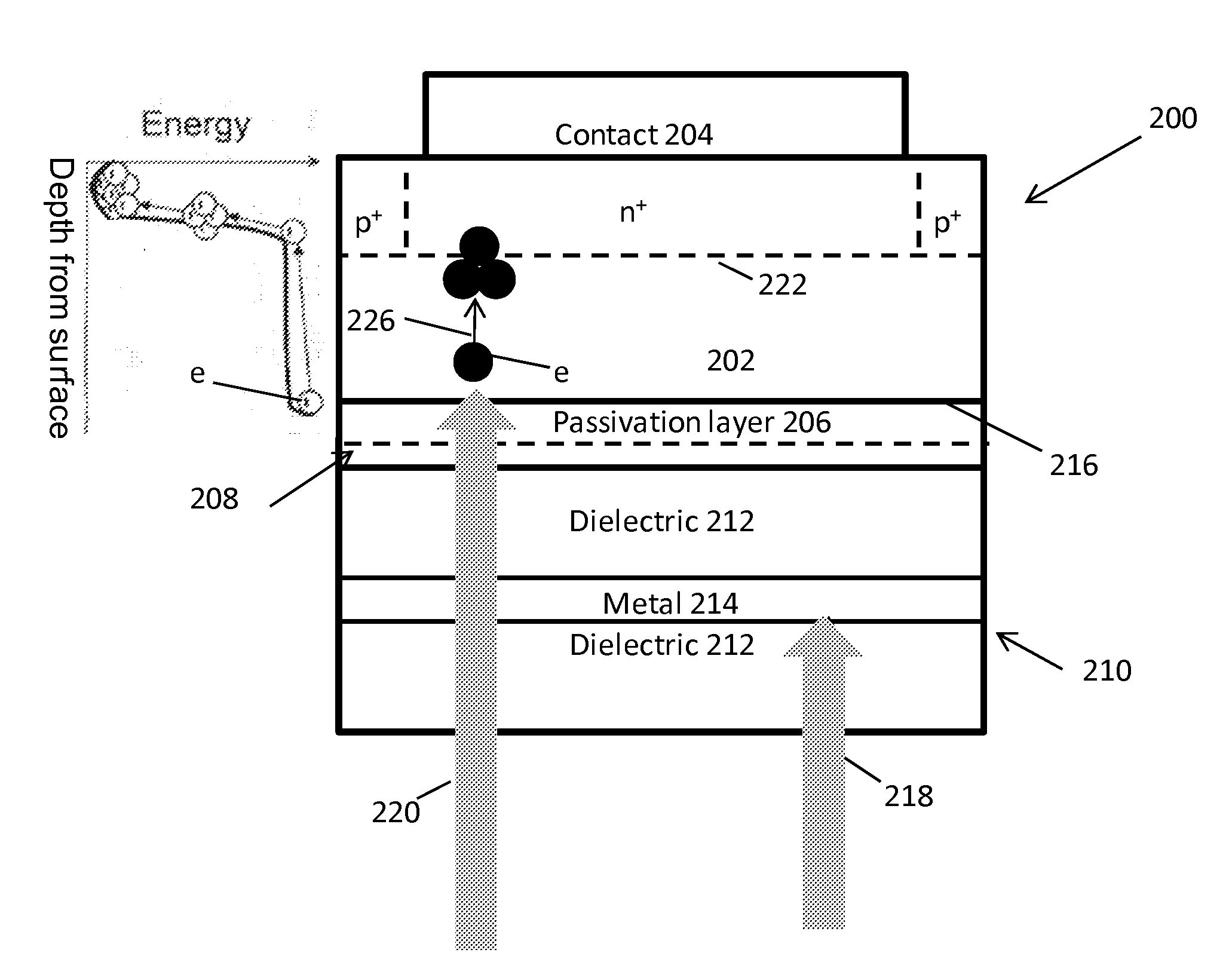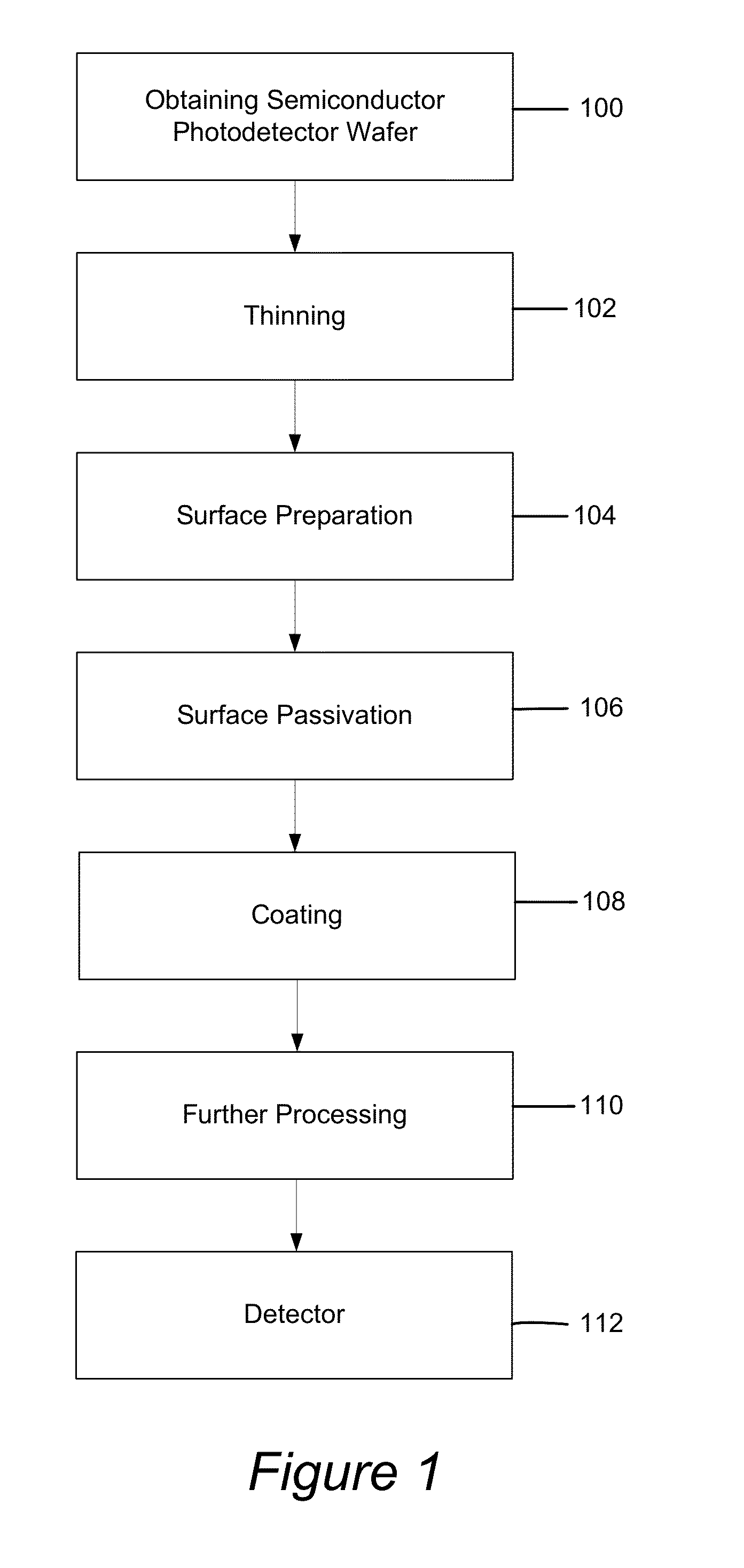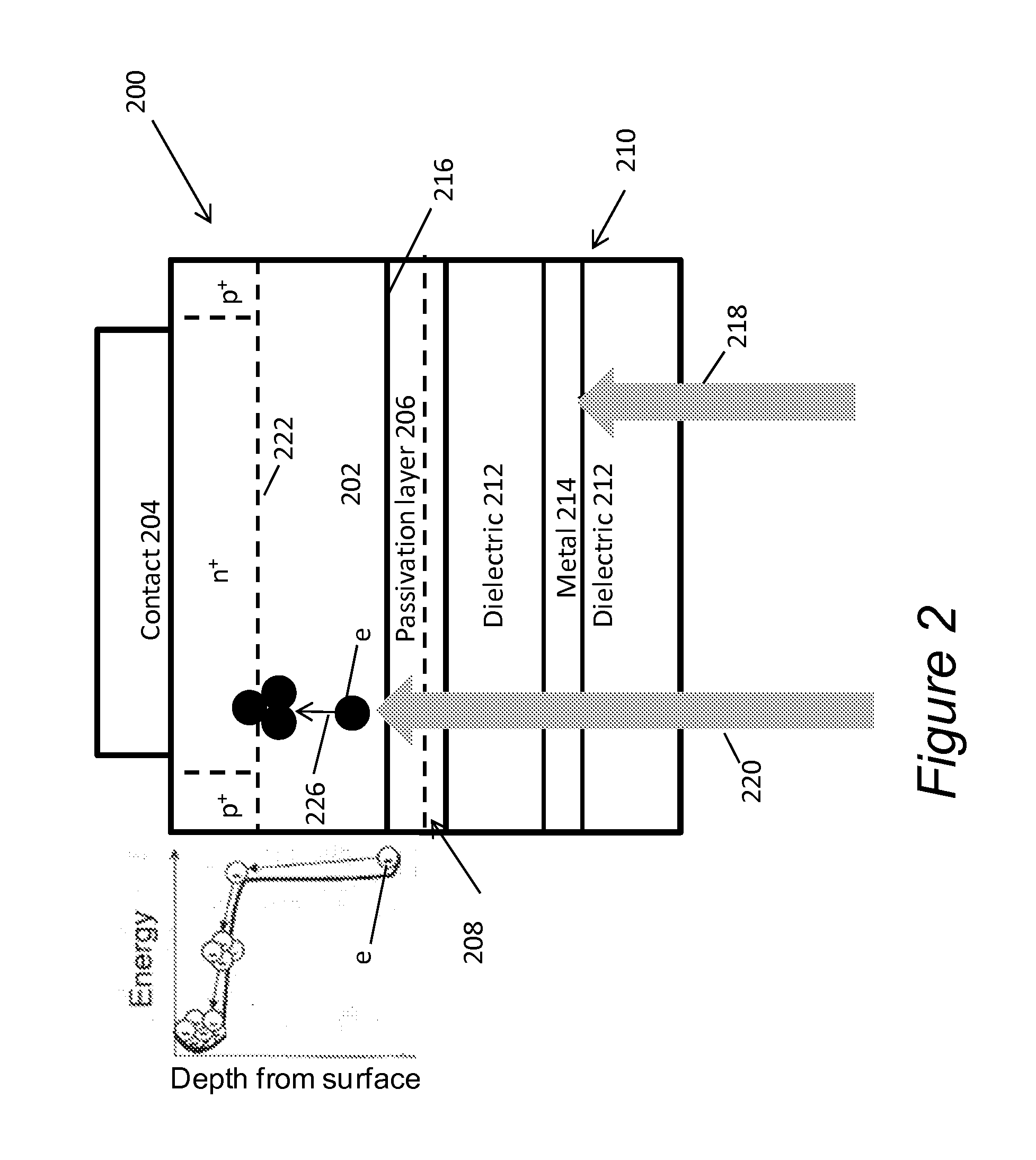Subnanosecond scintillation detector
a detector and subnanosecond technology, applied in the field of detectors, can solve problems such as the ratio of signal to nois
- Summary
- Abstract
- Description
- Claims
- Application Information
AI Technical Summary
Benefits of technology
Problems solved by technology
Method used
Image
Examples
Embodiment Construction
[0055]In the following description of the preferred embodiment, reference is made to the accompanying drawings which form a part hereof, and in which is shown by way of illustration a specific embodiment in which the invention may be practiced. It is to be understood that other embodiments may be utilized and structural changes may be made without departing from the scope of the present invention.
[0056]Technical Description
[0057]As noted above, large area solid state detectors with sensitivity around 200 nm and nanosecond rise times have potential applications in astrophysics, high energy physics, and medical imaging. Next generation high energy physics experiments require detectors of high energy gamma rays that can withstand unprecedented rates and radiation doses. Current experiments employ crystals such as PbWO4 or LYSO, which have scintillation decay times of ˜30 ns, which is far too slow for the new high rate experiments being studied. There is a faster crystal, BaF2, with a s...
PUM
 Login to View More
Login to View More Abstract
Description
Claims
Application Information
 Login to View More
Login to View More - R&D
- Intellectual Property
- Life Sciences
- Materials
- Tech Scout
- Unparalleled Data Quality
- Higher Quality Content
- 60% Fewer Hallucinations
Browse by: Latest US Patents, China's latest patents, Technical Efficacy Thesaurus, Application Domain, Technology Topic, Popular Technical Reports.
© 2025 PatSnap. All rights reserved.Legal|Privacy policy|Modern Slavery Act Transparency Statement|Sitemap|About US| Contact US: help@patsnap.com



